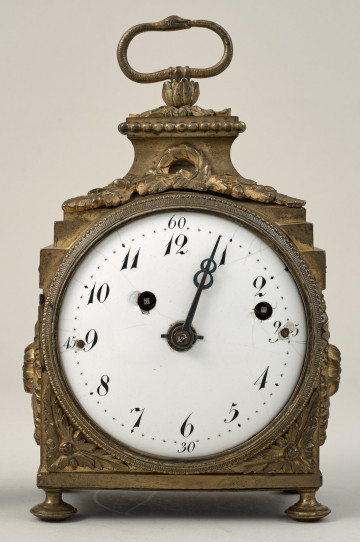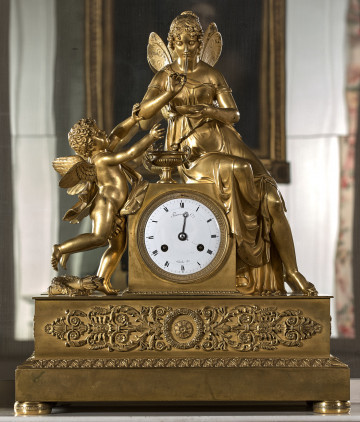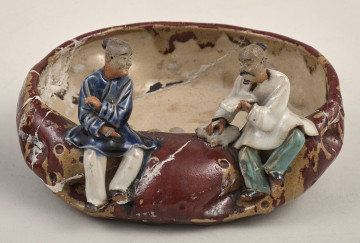
Empire clock
1st half of the 19th century
Castle Museum in Łańcut
Part of the collection: Zegary
The displayed clock was made of hard bisque porcelain in a fully plastically modelled figural sculpture. The sculpture's subject is a couple of young shepherds gazing into each other, caught in a dance. They head towards the offset column; on top of it, sit three winged putti, one of whom holds the cornucopia in his hands. Additionally, at the feet of the shepherds is a cane, a hat, a jug, and a basket. Complementing the scene are two doves and bush branches. The dress of the figures evokes antiquity. The clockwork was installed inside the column. On a white dial, Roman numerals indicate the hours. The base evokes ground covered with vegetation. The clock is part of a set of three mythological-idyllic sculptures called a Rundgruppe; they are connected by a common thematic thread. These items imitate the famous Sèvres products from the late 18th century. It is worth mentioning that the Sèvres factory was the first in Europe to use bisque, which was previously produced in China. The term bisque refers to small sculptural depictions made of unglazed porcelain and once- or twice-fired, depending on its type. In 1973, the mantel set was shown in the Museum-Castle at the Bisque Exhibition.
Dimensions
height: 34 cm, width: 29.5 cm
Object type
clocks
Technique
watchmaking
Material
metal, biscuit
Creation time / dating
Owner
Castle Museum in Łańcut
Identification number
Location / status

1st half of the 19th century
Castle Museum in Łańcut

18th-19th century
Castle Museum in Łańcut

Castle Museum in Łańcut
DISCOVER this TOPIC
Museum of King Jan III's Palace at Wilanów
DISCOVER this PATH
Educational path